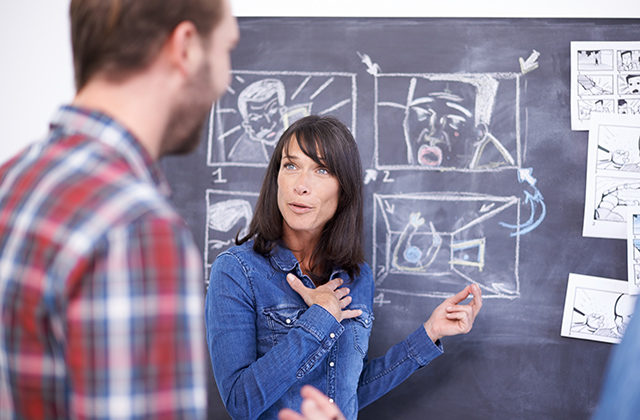
Unleashing the Power of 7 Unique Storyboard Approaches for the Modern Storyboard Artist in Film
Introduction
In the dynamic world of filmmaking, storyboards serve as the visual blueprints that guide the creative vision from script to screen. A skilled storyboard artist film plays a pivotal role in translating the written word into a visual language that captures the essence of a story. In this article, we’ll delve into the realm of storyboarding and explore seven unique approaches that empower storyboard artists in the film industry.
- Traditional Linear Storyboarding
The traditional linear approach is the foundational method employed by storyboard artists. It involves creating a sequence of illustrations that mirror the chronological order of scenes in the script. This approach provides a straightforward visual narrative, allowing filmmakers to grasp the flow of the story effortlessly. The linear method remains a staple in filmmaking, offering clarity and coherence to the storytelling process.
- Non-Linear Storyboarding for Unconventional Narratives
In contrast to the traditional linear method, non-linear storyboarding breaks free from the constraints of chronology. This approach is particularly beneficial for films with intricate, non-traditional narrative structures. Storyboard artists can craft sequences that jump back and forth in time, offering a unique perspective that challenges the viewer’s expectations. Non-linear storyboarding is a powerful tool in the hands of a skilled artist, providing directors with the ability to experiment with time and storytelling conventions.
- Mood Boards for Visual Atmosphere
Sometimes, the emotional tone of a scene is just as crucial as the plot itself. Mood boards are a valuable addition to a storyboard artist’s toolkit, allowing them to emphasize the atmosphere and emotions that underpin a particular moment. By combining images, colors, and textures, a storyboard artist can evoke a specific mood, providing directors and cinematographers with a visual guide to crafting the desired ambiance in each frame.
- Interactive Storyboarding for Enhanced Collaboration
In the age of technology, interactive storyboarding has emerged as a collaborative and efficient approach. Utilizing digital tools, storyboard artists can create interactive prototypes that allow directors and other team members to navigate through the storyboard seamlessly. This real-time collaboration fosters communication, enabling quick adjustments and ensuring everyone is on the same page. Interactive storyboarding enhances the pre-production process by promoting a dynamic exchange of ideas.
- Storyboard Animatics for Dynamic Pre-Visualization
Storyboard animatics take the traditional static storyboard to the next level by incorporating motion and sound. This approach provides a more dynamic representation of the final product, giving filmmakers a taste of the pacing, rhythm, and overall cinematic experience. Storyboard animatics are particularly useful for action sequences, allowing directors to fine-tune choreography and pacing before entering the actual production phase. This approach not only saves time but also enhances the overall quality of the final product.
- Collaborative Storyboarding for Collective Creativity
In a collaborative industry like filmmaking, the input of various creative minds is invaluable. Collaborative storyboarding involves bringing together multiple storyboard artists to contribute their unique perspectives to different scenes or sequences. This approach can result in a rich tapestry of visual styles and ideas, creating a storyboard that is truly reflective of the collective creativity within the team. It also fosters a sense of ownership and collaboration among artists, enhancing the overall quality of the storyboard.
- Augmented Reality (AR) Storyboarding for Immersive Visualization
As technology continues to advance, so do the possibilities for storytelling. Augmented Reality (AR) storyboarding is at the forefront of this innovation. By incorporating AR elements into storyboards, artists can create immersive visualizations that go beyond traditional 2D representations. This approach allows filmmakers to experience key scenes in a more interactive and realistic manner, providing a glimpse into the final product before actual production begins.
Conclusion
In the ever-evolving landscape of filmmaking, storyboard artists play a crucial role in translating ideas into visual narratives. The seven unique storyboard approaches discussed here showcase the versatility and creativity inherent in the craft. From traditional linear storyboarding to cutting-edge AR integrations, each approach empowers storyboard artists to bring stories to life on the big screen. As technology and storytelling techniques continue to evolve, so too will the tools and approaches available to storyboard artists, ensuring that the power of visual storytelling remains at the forefront of cinematic innovation. Inquire here to so that we can help you in your filmmaking projects.